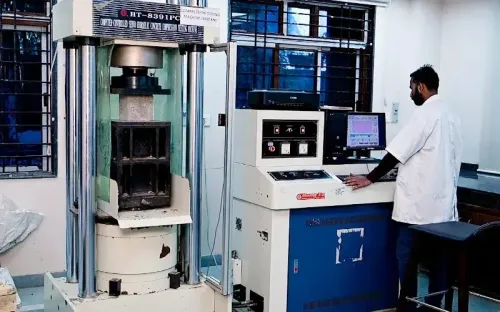Research Uncovers Mechanism of Zika Virus in Human Placenta and Its Link to Foetal Demise

Synopsis
Key Takeaways
- US researchers identified Zika's method of spreading in placental cells.
- The virus disrupts the immune system, potentially leading to fetal death.
- NS1 protein in Zika helps form tunneling nanotubes for viral transfer.
- Findings may guide future therapeutic strategies.
- First demonstration of Zika-induced tunneling in placental cells.
New Delhi, Feb 22 (NationPress) Researchers from the United States have uncovered the method by which the Zika virus insidiously propagates within placental cells, leading to immune system disruptions and ultimately resulting in foetal death.
The Zika virus, which is spread through mosquito bites, is known to cause neurological disorders, foetal malformations, and foetal demise during pregnancy.
Previously, the means by which the virus breaches the placenta—a crucial barrier that safeguards the developing foetus from potential threats—remained elusive.
Investigators at Baylor College of Medicine and Pennsylvania State University found that the Zika virus creates underground structures—known as tunnelling nanotubes—that allow the virus to transfer particles to adjacent, uninfected cells.
The research team identified that a Zika protein named NS1 plays a pivotal role in the creation of these minuscule tunnels. "When placental cells are exposed to the NS1 protein, it stimulates the formation of tunnels. As these tunnels grow and connect to neighbouring cells, they provide a pathway for the virus to infiltrate new cells," explained Dr. Rafael T. Michita, a postdoctoral research associate at Baylor.
"Zika is unique among its relatives, such as dengue and West Nile viruses, as its NS1 protein induces tunnel formation across various cell types.
Additionally, other non-Zika viruses, including HIV, herpes, influenza A, and SARS-CoV-2 (the virus responsible for COVID-19), can also form similar tunnels in their host cells to spread to uninfected ones. This is the first documented instance of tunnelling due to Zika virus infection in placental cells," Michita noted.
The study, published in Nature Communications, revealed that these minuscule channels not only transport viral particles but also carry RNA, proteins, and mitochondria—the primary energy source for cells—from infected to neighbouring cells.
The movement of mitochondria through these tunnels may not just provide a boost in energy to the infected cells but could also assist the Zika virus in evading the antiviral defenses set by the placenta, according to the researchers.
The findings present critical insights that could inform the development of therapeutic approaches aimed at countering this covert mode of transmission.









